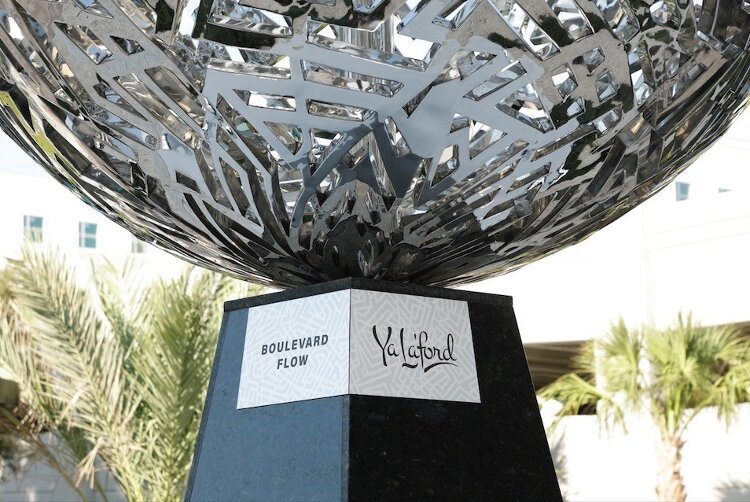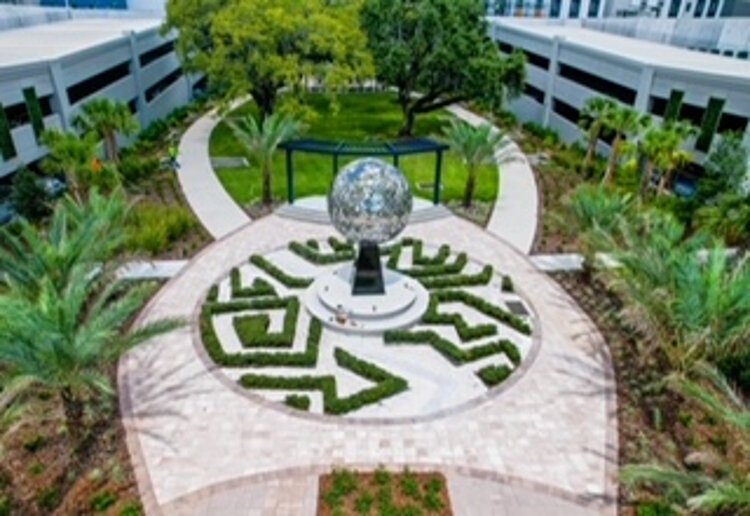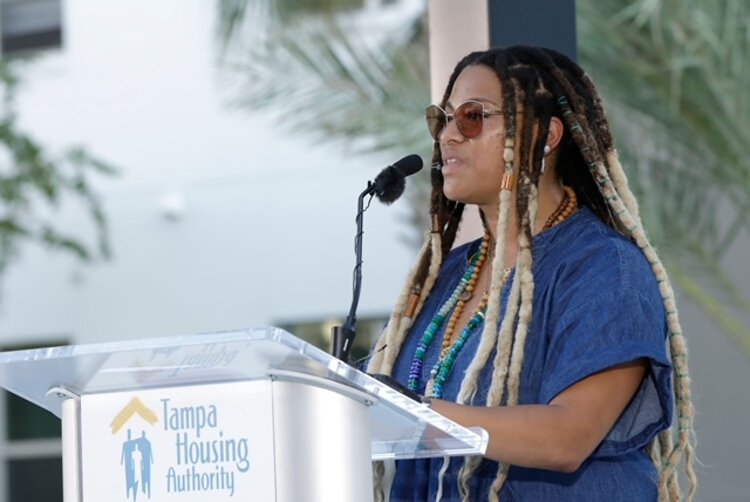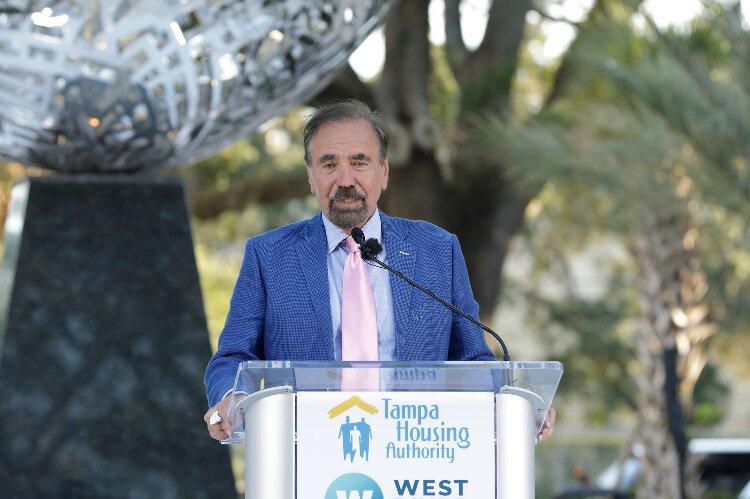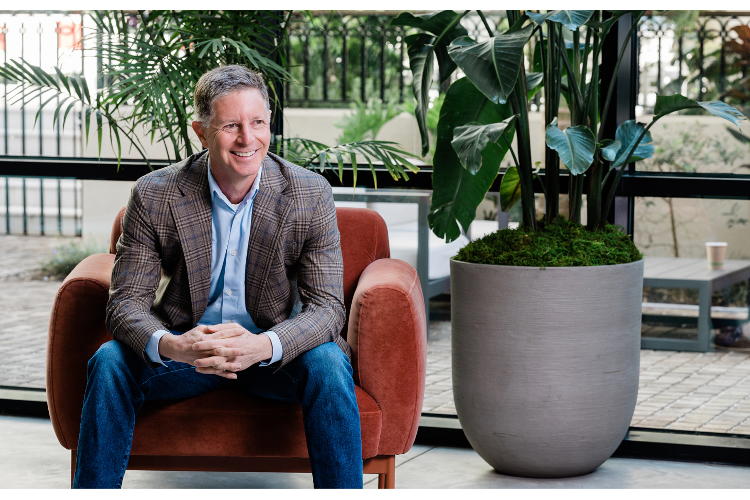“Boulevard Flow:” Public art takes center stage in Tampa’s West River
With artist Ya La'ford's "Boulevard Flow," the Tampa Housing Authority and Related Group have put public art center stage in the West River development.
Studies show where there is public art people are generally happier, the economy is stronger and crime rates are lower, making public art a well-accepted principle of urban design.
This principle takes center stage in the recent dedication ceremony of a new piece of public art, the installation “Boulevard Flow,” in Tampa’s emerging West River development. The West River plan focuses on transforming 120 acres along the western bank of the Hillsborough River, bridging downtown to West Tampa, with the purpose of creating a diverse community for people of all income levels.
During the September event, invited guests, elected officials and West Tampa residents gather to celebrate the installation, a milestone of public art located in the greenway at The Boulevards at West River, a cluster of four apartment buildings built as part of the West River neighborhood redevelopment plan.
“Boulevard Flow” includes a labyrinth-shaped park and a 10-foot sculptural metal sphere atop a pedestal. The sculpture by international artist and Tampa resident Ya La’ford is inspired directly by the community itself.
“I took off my shoes and stood amongst these giant oak trees to gain inspiration,” La’ford says. “I reflected on the circle in which I positioned the work. I began to consider a sphere, an enormous sphere that would represent a sense of oneness, wholeness, completion and, overall, a place for this community to celebrate our past present and future.”
Her sculpture highlights the interconnectivity between community life of the diverse West Tampa ecosystem – the geometric design represents the movement of the people and the southwestern flow of the Hillsborough River – and basks in the shade of the oak tree canopy.
In a speech to those gathered, La’ford continues, “Boulevard Flow captures a sequence of reoccurring geometric patterns intended to orchestrate a conversation between the perfect and imperfect. Angular contours along with notions of totality, wholeness and infinity that make us a beautiful humanity, demonstrating the harmony of art and housing.”
Tampa Mayor Jane Castor takes a moment to recognize the cooperative efforts of local and state officials who gathered to “honor all that is great about our community.” The public and private sector collaborative spirit is continually referenced as key to the success of the project. Of equal note is the inclusion and investment in public art as a distinguishing factor to the quality of the development.
A growing number of public and private partnerships has turned Tampa Bay into a canvas for artists. West River is a partnership between the Related Group and the Tampa Housing Authority. Planners have commissioned several public art pieces for West River. Among the selection, “Boulevard Flow” elicits an exceptional response from Related Group Chairman/CEO/co-founder Jorge M. Pérez.
In his comments, he addresses La’ford.
“To the great artist, I am a member of the group called Giving Pledge and sometimes I get criticized because we pledge that we’re going to give fifty percent of what we have to the community, to philanthropy,” Pérez says. “And many of them say, ‘There are so many problems in the world, why do you give to art when there are homeless and hungry?’”
He acknowledges the importance of giving to these charities too but says the arts also serve the greater good.
“I always say, when you have programs that are feeding the stomach, and it’s important; people need a home and good jobs,” Pérez says. “But I always say, remember you also need to feed the soul, and art feeds the soul.”
He shares his experiences as a former board member of the National Endowment of the Arts.
“In every study we did, children from early on, when they are exposed to art and the creativity behind the arts, they grow up to be much more intelligent, much more creative and better human beings,” Pérez says. “Art collection makes me a better person and that’s why we put art in all our projects.”
He praises “Boulevard Flow” for enhancing the greenway to be an incredible space.
Tampa Housing Authority Senior Vice President and Chief Operating Officer Leroy Moore echoes this sentiment.
“THA has long been intentional about the inclusion of public art in its development projects for over two decades now,” Moore says. “And we see art as essential to creating a sense of place, promoting the reality that beauty comes in all shapes, sizes and individual expressions. And you will see that our art speaks directly to the diversity of our communities and provides evidence that we all have something unique that can touch and inspire one another.”
Examples of this commitment include numerous pieces of public art in the successful Encore District Redevelopment with the help of the City of Tampa Arts and Cultural Affairs staff. In all, the City of Tampa is home to over 800 pieces of public art and the collection is growing.
“The visual art within a city is the heartbeat in many ways,” Arts and Cultural Affairs Division Manager Robin Nigh says. “It is an identifier; it makes a space a place. You must have the arts. Studies have shown when you are engaged in the arts, you are less judgmental and more receptive to ideas; perhaps because you feel like you have been heard, seen. Public art is the speaking and emotional heart of a city.”
“Boulevard Flow” is located at 1345 W. Main St.

